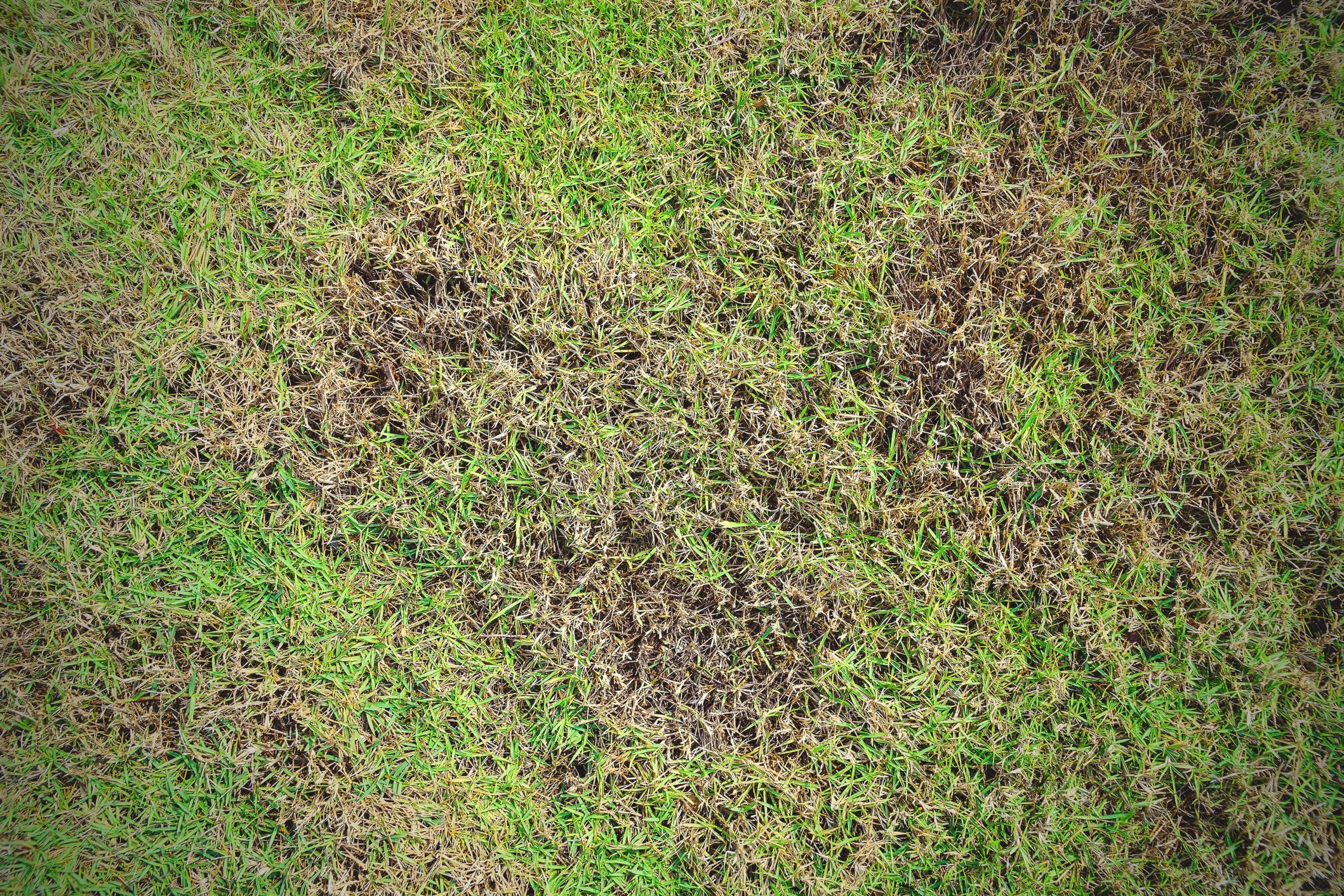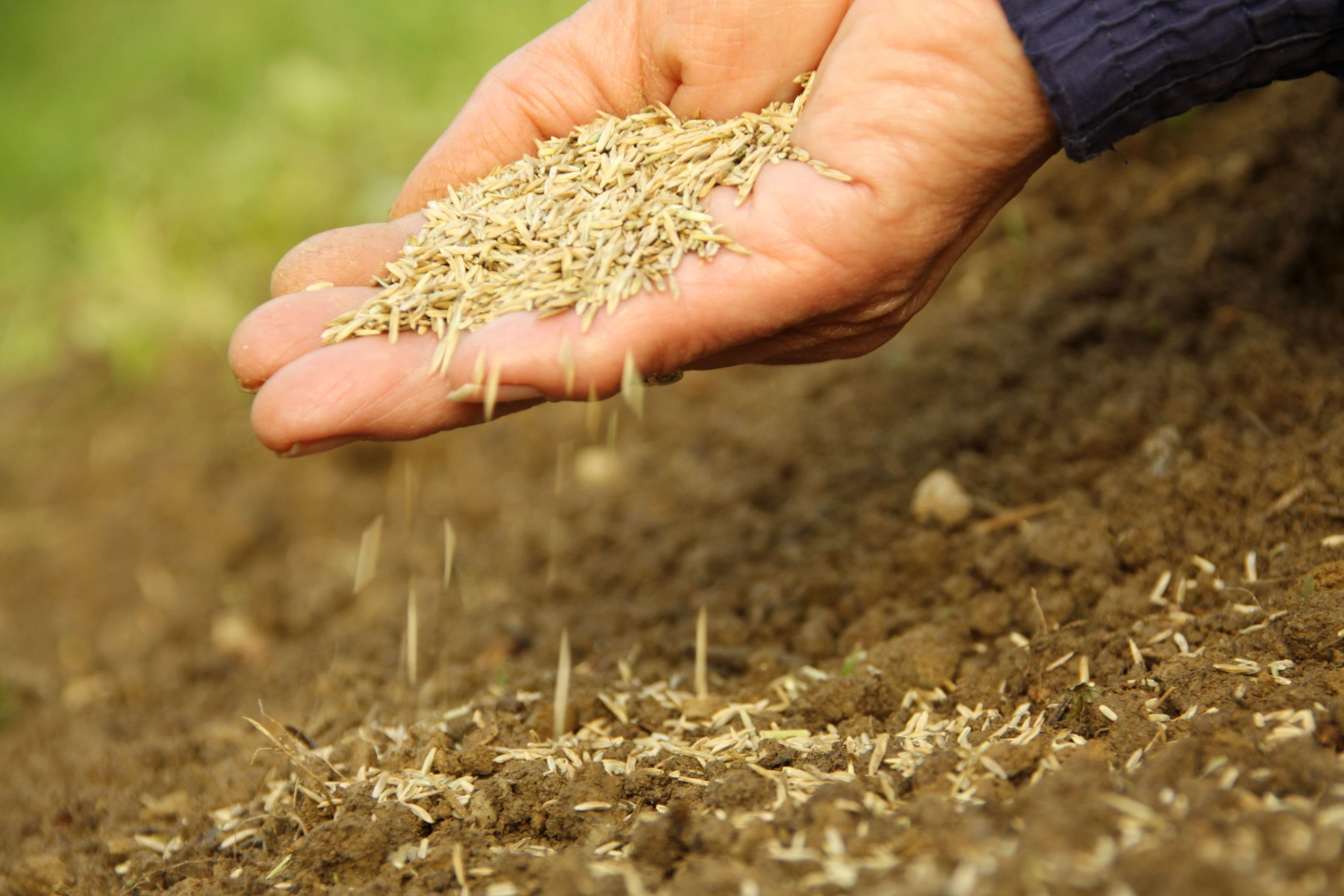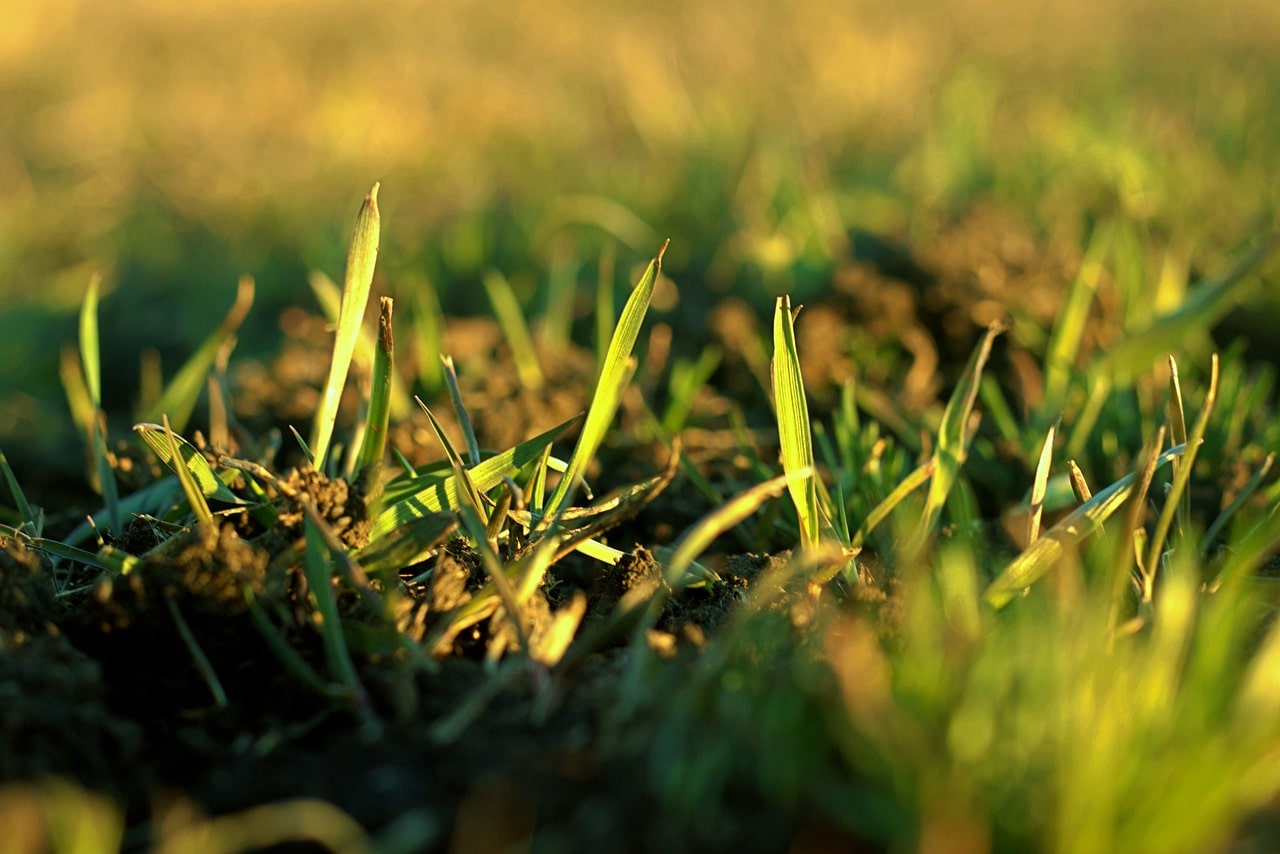If your lawn gets waterlogged easily after rain, this can be extremely frustrating, especially if the water is very slow to drain as the weather dries up.
Fortunately, if you live in a wet part of the UK, and your lawn doesn’t drain easily, there are steps you can take to fix this issue.
In this guide, we’ve looked at temporary, as well as more permanent methods of draining water from grass and soil.
Contents
- What causes waterlogged grass?
- How to drain a lawn
- How to prevent your garden becoming waterlogged
- How to install a drainage system
What causes waterlogged grass?
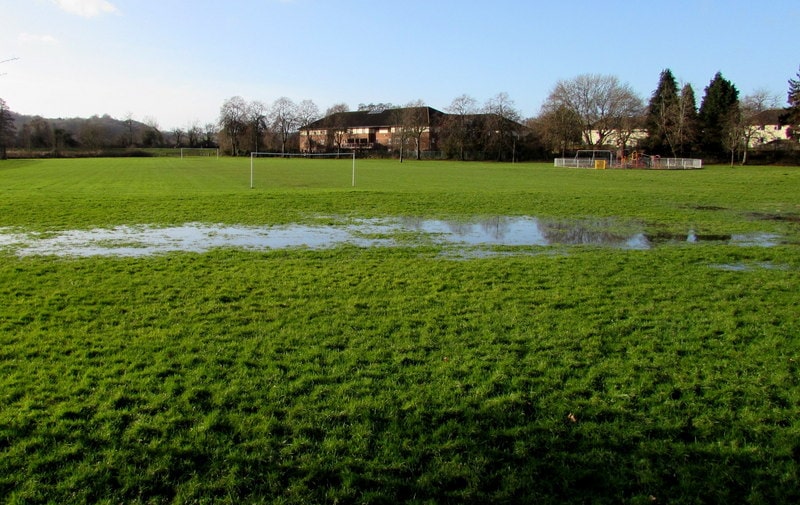
Here in the UK, grass gets waterlogged due to the heavy rains we often experience. However, some gardens will drain better than others.
Waterlogged lawns are caused by:
- Grass with shallow root systems. The healthier your lawn, and the longer its roots, the better it’s able to drain. This is why new lawns can be more prone to becoming waterlogged.
- Compacted, clay-heavy soils. The more compacted your soil, the less room there is for water to drain below the ground, causing waterlogging.
- Extreme periods of rain. Even quite healthy grass with good drainage can become waterlogged if subjected to a torrential downpour over consecutive days.
How to drain a lawn
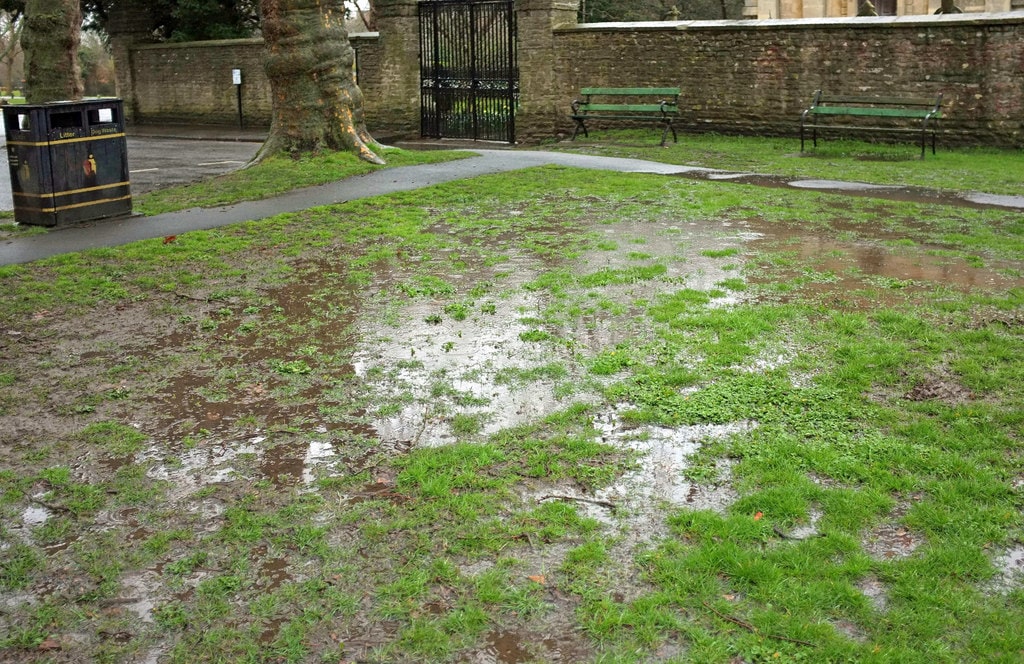
If your garden has become waterlogged for the first time, you can try to drain it using the following process.
- Sweep any excess water sitting on the surface off the lawn. If this is not possible, you can either use a siphon system, or wait until the water has drained away a little if possible.
- Spike your lawn with a specialised spiking tool. You want to create thin holes approximately 15cm deep, and at least 50cm apart from one another. If you have extremely compacted soil, you’ll want to create more spikes. The best type of tool for this is a hollow tiner, as it has a hollow tube that helps to remove the soil from the spike much more easily. You can also create shallow 3cm pricks if you have a smaller lawn with a less serious drainage problem. A powered lawn aerator is a useful tool to make the process more efficient on larger lawns.
- If you’re making deep spikes, fill them in with a material that will allow water to drain, such as horticultural sand.
- Spike the lawn every couple of years if the problem persists.
How to siphon away water from your lawn with a garden hose
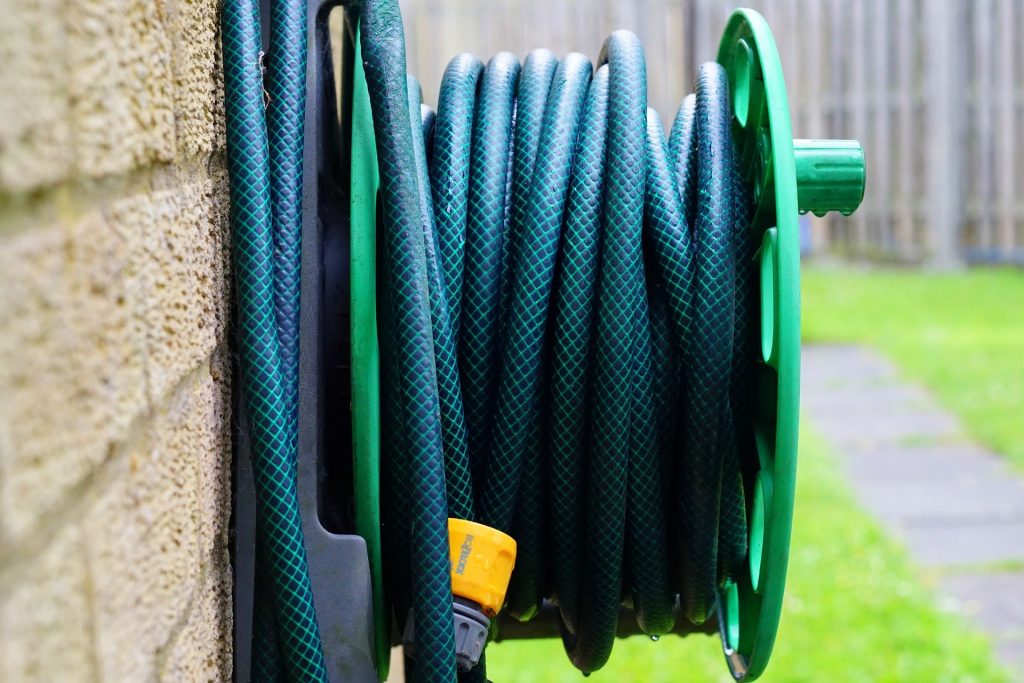
If you need to siphon away excess water as a part of step #1, here’s how you can do this with a garden hose.
- Close the nozzle on the end of your garden hose, so that when you turn the tap on, nothing comes out.
- Place the nozzle end where you want the water to drain. This must be somewhere lower than where the water is standing.
- Attach the hose to the tap end, and turn it on, to fill the hose with water. Once it’s full, turn the tap off.
- Detach the hose from the tap end, and place it in your surface water.
Provided the end of your hose is at a lower elevation than the puddle of surface water, it should begin to drain.
You can also use a pump to create a siphon at the nozzle end of the hose, if you’re having trouble getting the siphon started.
How to prevent your garden becoming waterlogged
Apart from regularly spiking your lawn or installing a drainage system (which we’ll discuss below), there are other steps you can take to prevent waterlogging, and your lawn turning yellow due to poor drainage. Compared to installing a drain, these steps are much easier, as they focus on improving the health of your lawn, which isn’t normally all that complex.
- Use fertiliser to improve soil health. Essentially, by making your soil healthier, you’re making it easier for the roots to grow deeper, which helps to improve drainage. This is actually something that’s good to do after aerating your lawn. If you can get fertiliser to enter the holes you’ve created, this can improve the fertility of the lower ground, encouraging deeper root growth.
- Use lawn feed to promote root growth. While fertiliser makes soils more fertile, lawn food helps your grass to grow stronger.
- Blend new topsoil into areas that are prone to becoming waterlogged. If you have clay soil, this is a good way of improving soil drainage.
- Avoid going on your lawn when the soil is very wet. This can cause the soil to become compacted, especially if you have clay soil.
It’s also a good idea to avoid laying new sod in the wettest parts of the year – typically October to January in the UK. You want to give your roots plenty of time to grow deep into the soil before experiencing heavy rain for the first time.
How to install a drainage system
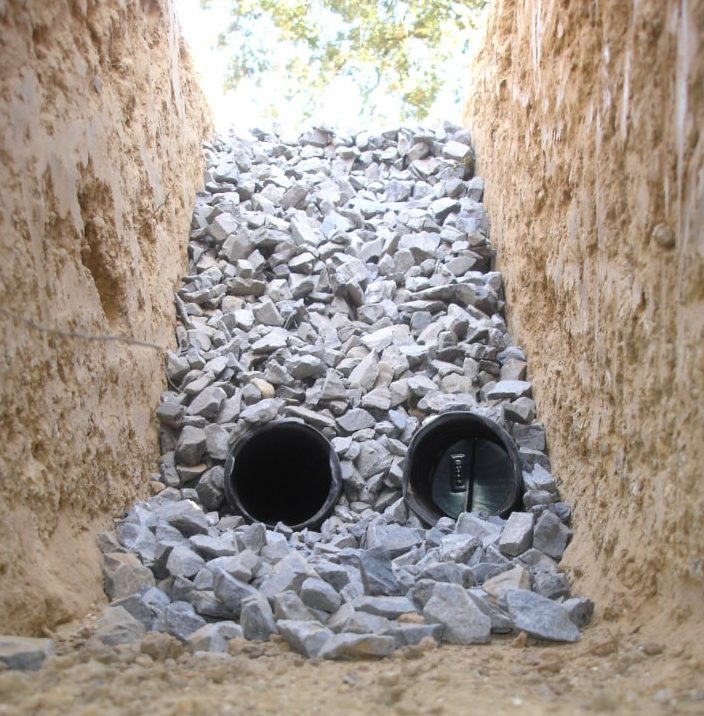
As a last resort, you can install a French drainage system to help channel water away from your garden.
A French drain is a channel with a porous drainage pipe at the bottom, lined with a porous material, and filled with shingle, that flows downwards to somewhere the water can drain away harmlessly. The trench sits just under the surface of the grass, a few inches below the sod.
The shingle helps water flow, without the drain filling in or becoming waterlogged. And if you line the trench with a porous material (normally drainage fabric), you allow water in but not silt, preventing the drain from becoming clogged up.
To choose when the French drain will run, you need to think about where the worst waterlogging occurs, and where you can deposit the water to allow it to drain. And remember, the French drain will need to run downhill. The steeper the slope, the better it will work.

I’m Josh, and I’m the head writer at Lawn Care Pro.
I love everything lawns, but I’m a bit of a lawn mower nerd. I spend a lot of my free time tinkering with mowers, and planning my mowing schedule for the next few weeks.
I’m also into cars, which comes in very helpful when servicing a mower engine!

